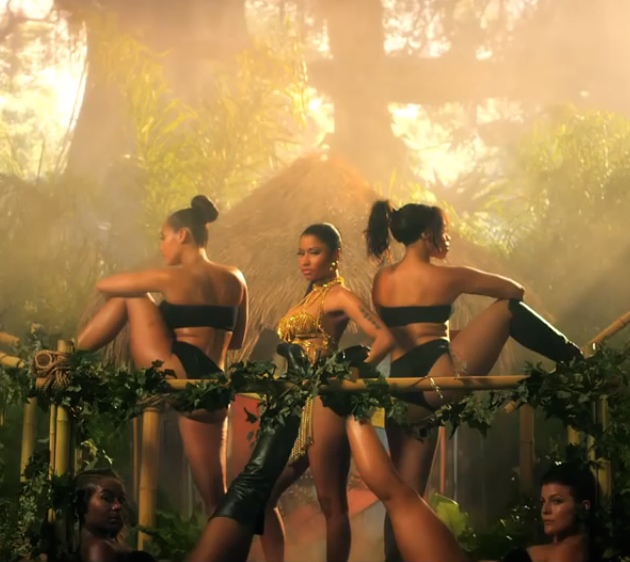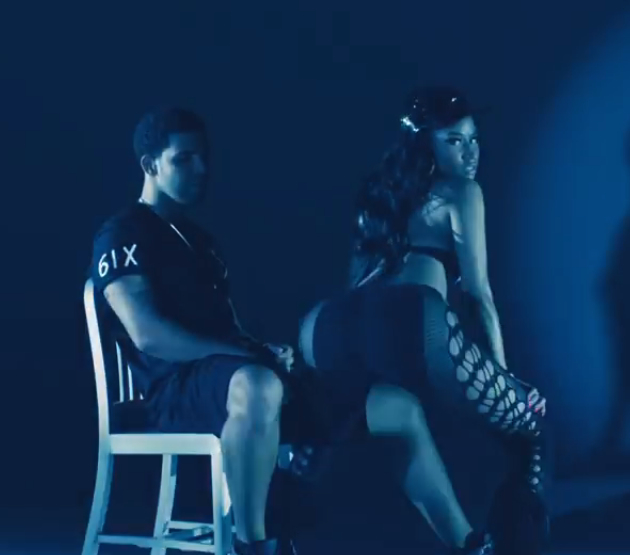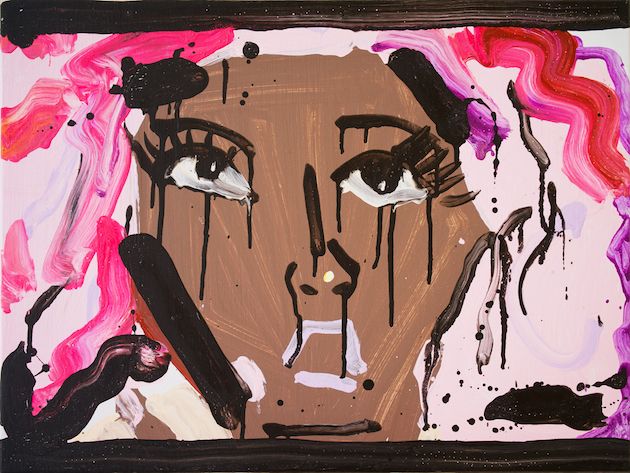“Oh my god, Becky, look at her butt!”
The shocked valley girl declamation kicks off Sir Mix-a-Lot’s 1992 hit “Baby Got Back,” as the video shows two clueless white girls staring at a black woman in a tight yellow dress writhing slowly but deliberately on a rotating podium. The girls natter on, comparing the object of their gaze to a “prostitute,” disgustedly spitting that “it’s just so round, it’s, like, out there!” and summing it all up by declaring, “She’s just so… black!” before Mix-a-Lot charges in with the opposing view: “I like big butts and I cannot lie!”
Black women’s bodies have been the object of a horrified, titillated, racist, and sexist gaze for hundreds of years. In 1810, Saartjie Baartman, an orphaned and widowed young woman from South Africa, was smuggled into London and placed on the stage in a skintight costume designed to emphasize her posterior. After her death in 1815, scientist Georges Cuvier performed a public autopsy in which he displayed her genitalia.
Cuvier’s autopsy was a long time ago, but the dehumanization of black women is as up-to-date as ever. Last year, Miley Cyrus mimed biting one of her black dancers on the rear during her Video Music Awards performance as part of her effort to sexualize her good-girl Disney image. As sociologist Tressie McMillan Cottom wrote, Cyrus was “playing a type of black female body as a joke to challenge her audience’s perceptions of herself while leaving their perceptions of black women’s bodies firmly intact. It’s a dance between performing sexual freedom and maintaining a hierarchy of female bodies from which white women benefit materially.” Black female bodies, and especially black female rear ends, Cottom suggests, are viewed as hypersexual commodities to use and display—whether for the greater glory of (white) pop stars or, as in Baartman’s autopsy, for the greater glory of (white) scientists.
If Nicki Minaj is upset about being perceived as a hyper-sexualized commodity, you can’t tell it from her new video, “Anaconda.” Built around samples from “Baby Got Back,” including “Oh my god, look at her butt,” and “My anaconda don’t want none / Unless you’ve got buns, hon,” put on loop, Minaj spends four and a half minutes twerking and gyrating her rear and other parts—but especially her rear. The video opens with Minaj and several other dancers on a rope bridge in a flagrantly cheesy jungle setting; it could almost be a minstrel skit.

“Anaconda” is in some degree working from the same tropes as Baartman’s autopsy or Cyrus’s performance. Minaj is, like her predecessors, commodifying black women’s sexualized bodies by highlighting and fetishizing black women’s rear ends. This isn’t exactly surprising; if someone is going to commodify black women, why shouldn’t black women themselves want to realize part of the profit? Baartman was herself paid a small amount for her time on the stage (though not, obviously, for Cuvier’s autopsy), and for that reason resisted efforts to “rescue” her and send her back to South Africa, where her prospects were even bleaker. Similarly, the dancer Cyrus groped was being paid—less than Cyrus, no doubt, but still more than nothing. Minaj at least is the chief beneficiary of her own self-packaging; she may present herself as a racist trope, but she’s well-paid for it—and a well-paid black woman pushes back, at least a bit, against the racist view of black women as only commodities for someone else’s profit.
“Anaconda” presents Minaj as jungle-girl sexual prop, but she also gets to be a fashion plate, a weightlifter, and (with that banana) a cheerfully castrating bitch.
The video’s use of racist tropes is more than just instrumental. On the contrary, it seems positively joyous. Minaj picks up Sir Mix-a-Lot’s black male gaze enthusiastically, strutting her own curves in a barrage of form-fitting outfits while spitting not-even-really-double entendres like, “He can toss my salad like his name Romaine,” and flat-out insults like, “Fuck the skinny bitches! Fuck the skinny bitches in the club.” She seems to be having the time of her life inhabiting and owning the image of the hypersexual, pathologically large-bottomed black woman.
“Anaconda” echoes Josephine Baker, who famously declared, “The rear end exists. I see no reason to be ashamed of it. It’s true there are rear ends so pretentious, so insignificant [“the skinny bitches in the club”] that they’re good only for sitting on.” And in its flirtation with stereotype, it also points to the scene in Invisible Man where the protagonist breaks down and buys a yam, one of the Southern foods stereotypically associated with minstrelsy, bites into it, and is “overcome by an intense feeling of freedom.” Part of the deforming power of racism is not just that it reduces individuals to stereotypes, but that it can force individuals to spend their lives desperately avoiding stereotype in the name of respectability and acceptance. White society says black people can maybe be people on the condition that they don’t eat yams or flaunt their rear ends. To which Ellison’s narrator replies, “I yam what I yam,” and Minaj adds, “I got a big fat ass.” As Mel Watkins says in the foreward to Yuval Taylor and Jake Austin’s Darkest America, a study of black minstrel performance, minstrelsy included at least “faint traces” of authentic African American culture, which is why “so many members of the black community still embrace the seemingly slanderous stereotypes and find them humorous.”

Again, though, there’s more to the video than Minaj celebrating her disrespectability. That opening jungle setting is completely faux and over the top; the video cuts repeatedly to pineapples and bananas spinning on a turntable. Minaj is enjoying the stereotypes, but part of the way she’s enjoying them is by mocking them. The video skips stochastically from the rope bridge to Minaj in a tight, glam Alexander McQueen dress to a gym to Minaj in pink hair as a cooking-show host spreading whip cream on herself and making a disgusted sneer as she chops up a banana. She also flirts intensely with the other dancers (and with her own much-discussed and often-denied bisexuality), slapping another woman’s rear rhythmically at one moment, letting her dancers slide over her and bite her at another. At the conclusion of the video, she teases Drake with a twerking lap dance, then, when he tries to touch her, knocks his hand away and walks out.
“Anaconda” presents Minaj as jungle-girl sexual prop, but she also gets to be a fashion plate, a weightlifter, and (with that banana) a cheerfully castrating bitch. She deliberately makes herself the sexual object of a female gaze, as well as a male one—and then presents herself as the subject gazing at other women with desire. Meanwhile, the Mix-a-Lot valley girl sample playing in the background (“Oh my god, look at her butt”) is hard to read as anything but a sneer at Cyrus and Lily Allen and all the white women (and men, too) who are so obsessed with black women’s rears that they can’t see the human beings they belong to. White (and black male) representations of black women are presented as hyperbolic and transparently artificial—the video mocks their racism.
So is the video a cynical capitulation? A rejection of respectability? A parody? I don’t think you have to choose, and I don’t think Minaj did. In a culture where black women are seen as commodities, black women pop performers are in an almost impossible double bind: They either disappear into racist tropes or become commercially invisible. “Anaconda” doesn’t so much escape this dynamic as broadcast it, pummel it, and shake it. Minaj knows that the magic thing everybody loathes and desires is a part of her, and, one way or another, she’s going to own it.


